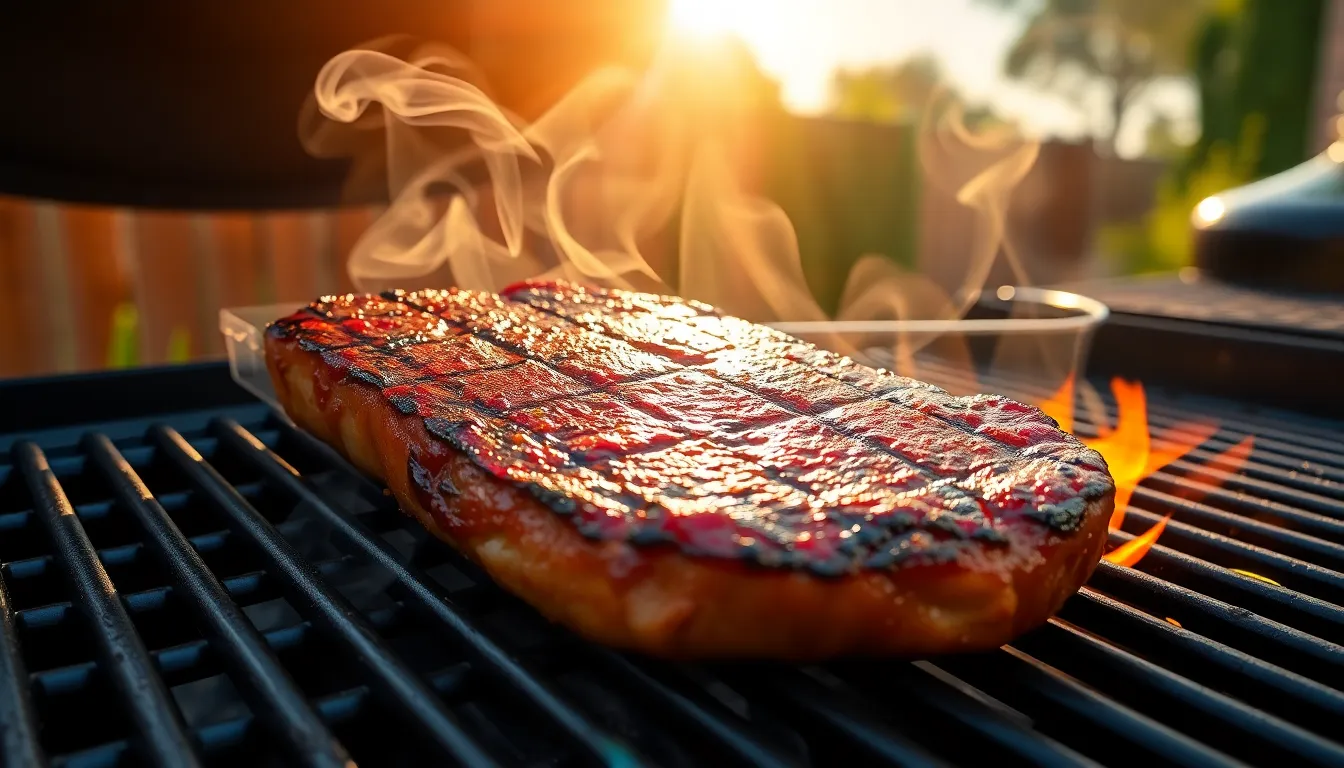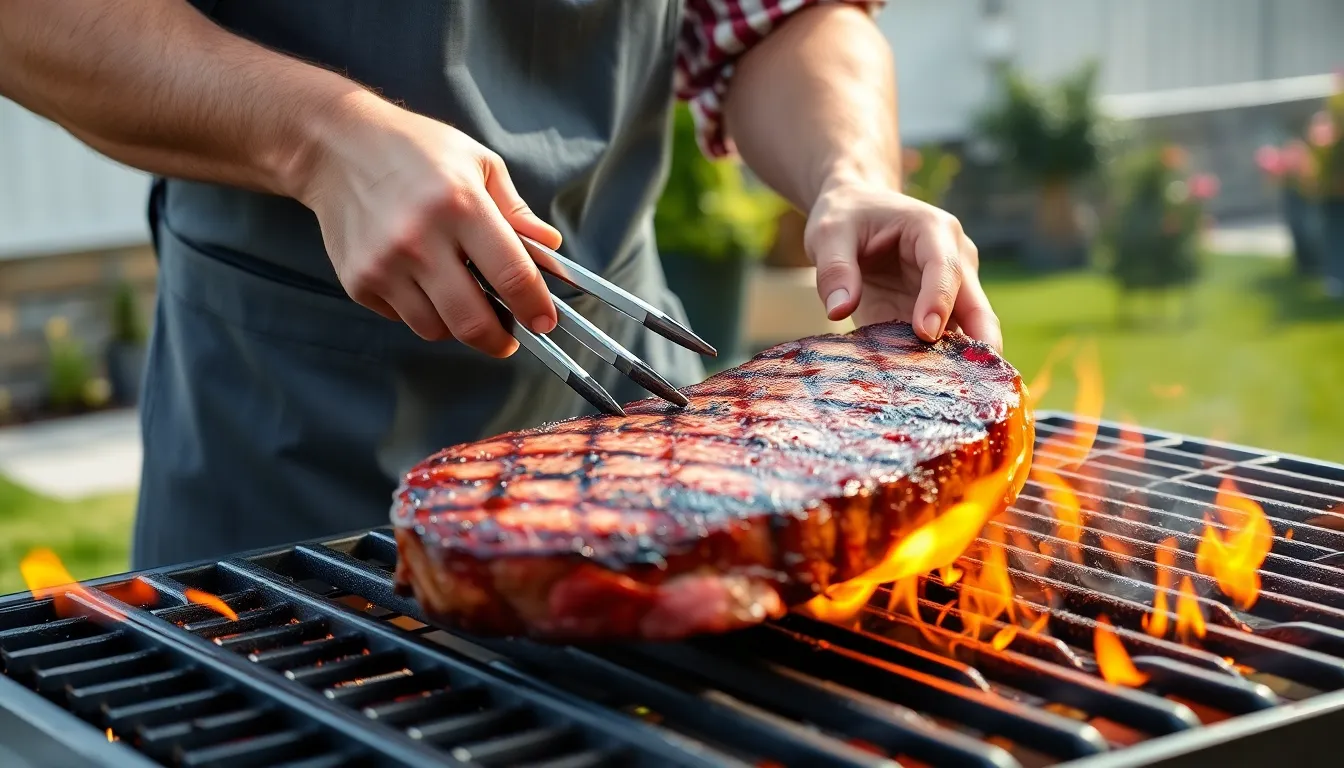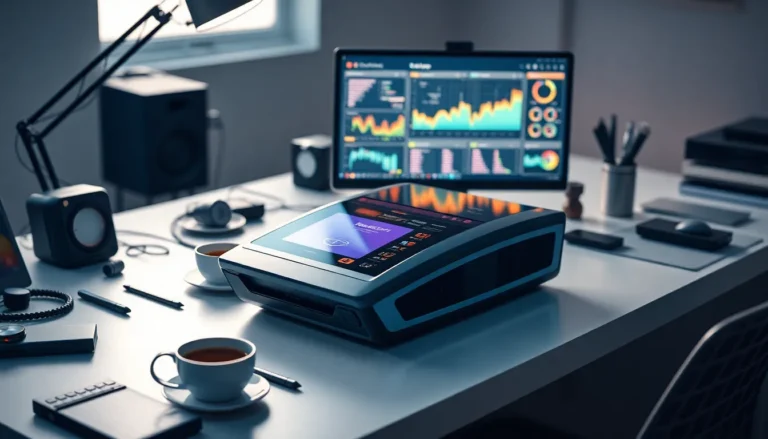When it comes to steak, the sizzling sound and mouthwatering aroma can make anyone weak in the knees. But let’s face it—cooking the perfect steak isn’t just about throwing a piece of meat on the grill and hoping for the best. It’s an art form that requires skill, technique, and maybe a sprinkle of magic. Whether you’re a seasoned grill master or a weekend warrior, mastering steak cooking techniques can elevate your culinary game to delicious new heights.
Table of Contents
ToggleOverview of Steak Cooking Techniques
Numerous techniques exist for cooking steak, each contributing distinct flavors and textures. Grilling involves direct heat, often yielding a smoky taste and grill marks. Pan-searing provides a caramelized crust, enhancing flavor through the Maillard reaction. Sous vide enables precise temperature control, ensuring evenly cooked steak with tender results.
Oven-roasting allows thick cuts to cook uniformly, often being finished with a quick sear for exterior crispness. Broiling utilizes high heat from above, perfect for thicker cuts with a browned top. Smoking infuses steamy, deep flavors through low and slow cooking methods.
Braising offers a unique approach, cooking steak slowly in liquid for tenderness. Placing steak in a slow cooker or Dutch oven achieves this effect. Reverse searing involves cooking steak at low temperatures first, followed by a high-heat sear, resulting in a beautifully crispy exterior.
Each technique suits different cuts of steak, with certain methods complementing specific flavor profiles. For example, grilling excels with ribeye and sirloin, while flank steak benefits from marinating and quick cooking methods. Experimenting with these techniques helps develop a personal cooking style and enhances steak preparation skills.
Familiarity with various methods allows for versatile cooking, adapting to different tastes and occasions. Understanding the nuances of each technique permits greater creativity in the kitchen, catering to any palate. Mastering these cooking styles leads to a broader appreciation of steak both as an ingredient and a culinary experience.
Grilling Techniques

Grilling techniques enhance steak flavor and texture. Mastering both direct and indirect grilling can elevate the grilling experience.
Direct Grilling
Direct grilling involves cooking steak directly over high heat. This method suits thinner cuts like flank or skirt steak. Cook time typically ranges from 4 to 8 minutes per side, depending on thickness. Maintaining a consistent temperature between 450°F and 500°F produces a nice sear. Achieving grill marks improves aesthetic appeal. Basting with marinades or seasoning adds layers of flavor during grilling. When grilling, flipping steak only once prevents moisture loss. Resting the meat for five to ten minutes after cooking allows juices to redistribute, leading to a tender bite.
Indirect Grilling
Indirect grilling employs a two-zone fire setup, allowing for slower cooking. This technique works well for thicker cuts like ribeye or sirloin. Position the steak away from the primary heat source, cooking at a temperature of 350°F to 400°F. Expect an approximate cook time of 10 to 15 minutes per side. Using a meat thermometer ensures ideal doneness, with 130°F for medium-rare and 145°F for medium. Adding hardwood chips to enhance the smoke flavor yields a richer taste. Incorporating a lid during cooking maintains consistent temperatures and moisture. Allowing the steak to rest after indirect grilling maintains tenderness and flavor.
Searing Techniques
Searing contributes a rich flavor and appealing texture to steaks. Various methods exist, each offering unique benefits.
Pan-Searing
Pan-searing utilizes a hot skillet to create a caramelized crust. Start with a heavy-bottomed pan, preferably cast iron. Preheat the pan over medium-high heat for several minutes until it’s thoroughly hot. When adding oil, choose one with a high smoke point, like canola or avocado oil. Place the steak gently in the pan, avoiding overcrowding. Cook each side for about 3 to 5 minutes. A well-timed flip ensures even cooking and enhances the Maillard reaction, a chemical reaction that creates that enticing sear. Use a meat thermometer to monitor doneness, enhancing the steak’s tenderness and flavor.
Oven-Searing
Oven-searing starts on the stovetop, transitioning to the oven for even cooking. Begin by heating an oven-safe skillet on high heat. After adding the steak and searing for approximately 2 to 3 minutes per side, transfer the skillet directly to a preheated oven at 400°F. Let the steak roast for another 5 to 10 minutes until it reaches the desired internal temperature. This technique locks in juices and flavor while ensuring thorough cooking. The combined high heat from both the skillet and the oven provides a perfect crust and a juicy interior.
Sous Vide Cooking
Sous vide cooking offers a precision method for preparing steak. This technique ensures even cooking and excellent flavor retention.
Equipment Needed
Using sous vide requires specific equipment. A quality immersion circulator maintains consistent water temperature. Vacuum seal bags or zip-lock bags help in removing air from the steak. A large container or pot holds the water bath for cooking. Optional tools include a blow torch or a skillet for searing after cooking. Each item enhances the sous vide process.
Cooking Time and Temperature
Cooking time and temperature depend on steak thickness. For tender cuts like filet mignon, set the temperature to 130°F and cook for 1 to 4 hours. Thicker cuts, such as ribeye, benefit from temperatures between 129°F and 131°F for 1 to 3 hours. Longer cooking times result in tender, flavorful outcomes. After sous vide cooking, searing the steak quickly in a hot skillet adds a desirable crust.
Broiling Methods
Broiling offers a high-temperature cooking technique that intensifies flavors and creates a delightful crust on steak. An oven broiler emits intense heat from above, ideal for quickly cooking thinner cuts. This method mimics grilling while providing an indoor solution for steak lovers.
Direct exposure to radiant heat maximizes browning through the Maillard reaction. It’s advisable to preheat the broiler for 5 to 10 minutes. Following preheating, placing the steak on a broiler pan allows fat to drip away, preventing flare-ups. Thinner cuts, such as flank or sirloin, require a cooking time of 6 to 8 minutes per side, depending on desired doneness.
When broiling thicker cuts, like ribeye or T-bone steaks, closer monitoring becomes essential. For best results, maintain a distance of 3 to 4 inches from the heat source. Cooking times extend to around 8 to 12 minutes per side for thicker steaks. A meat thermometer ensures precise doneness, with 130°F for medium-rare and 140°F for medium.
Resting the steak post-broiling is vital for succulent results. Covering the steak loosely with foil allows juices to redistribute, enhancing tenderness. For enhanced flavor, consider marinating the steak prior to broiling. Marinades with acidic components, like vinegar or citrus, infuse flavor and help tenderize the meat.
Overall, broiling presents a practical technique that yields impressive results. Understanding steak thickness and monitoring closely transforms simple cuts into mouthwatering dishes. Mastering this method contributes to versatility in steak preparation, elevating the dining experience.
Mastering steak cooking techniques opens up a world of culinary possibilities. By experimenting with grilling, pan-searing, sous vide, and broiling, anyone can elevate their steak game. Each method offers unique flavors and textures that enhance the overall dining experience.
Understanding the nuances of temperature control and resting times is crucial for achieving the perfect steak. Whether it’s the smoky char from the grill or the caramelized crust from pan-searing, the right technique can make all the difference.
With practice and a willingness to explore, anyone can develop their own signature style and truly appreciate the art of steak cooking. It’s about enjoying the process and savoring the delicious results.




